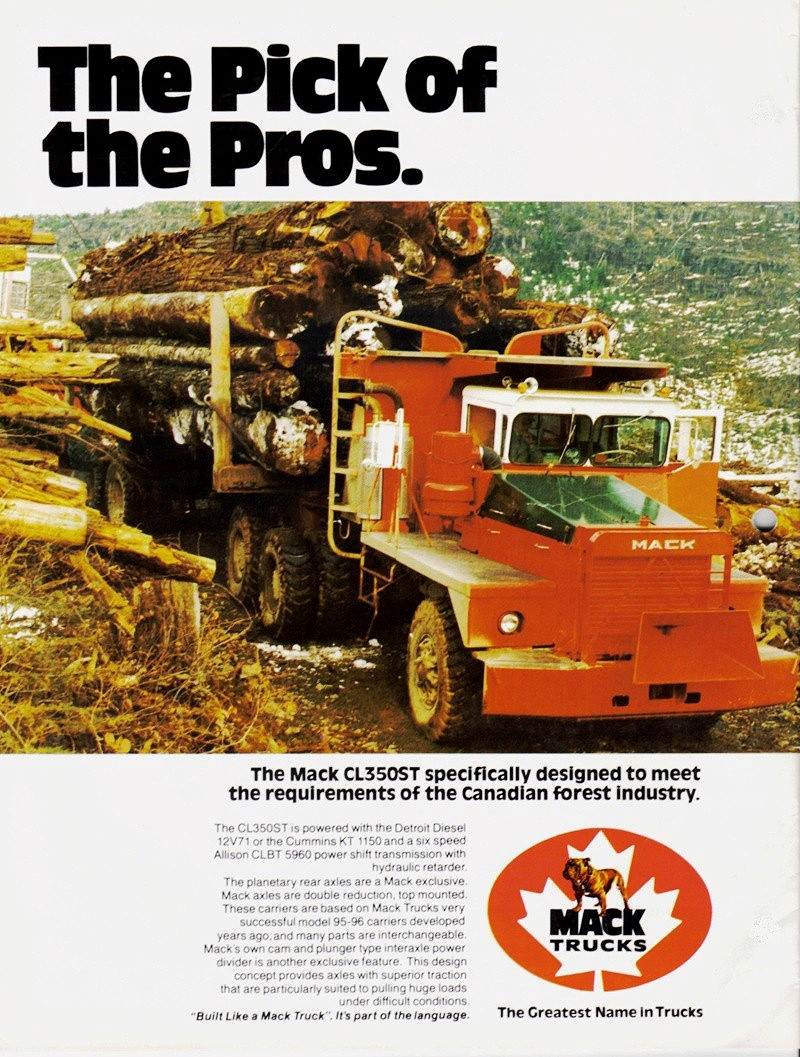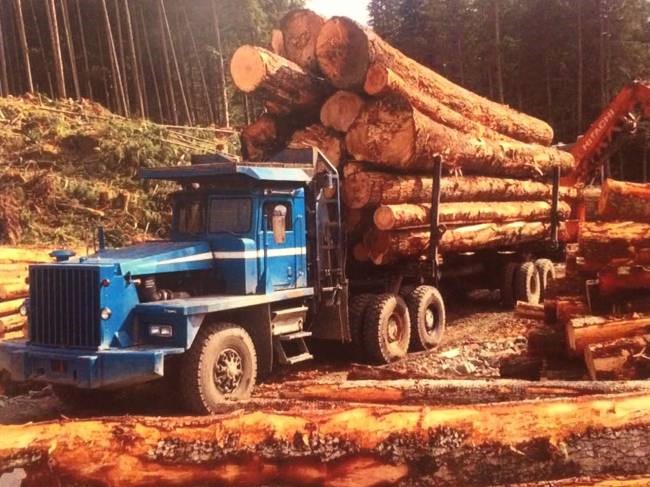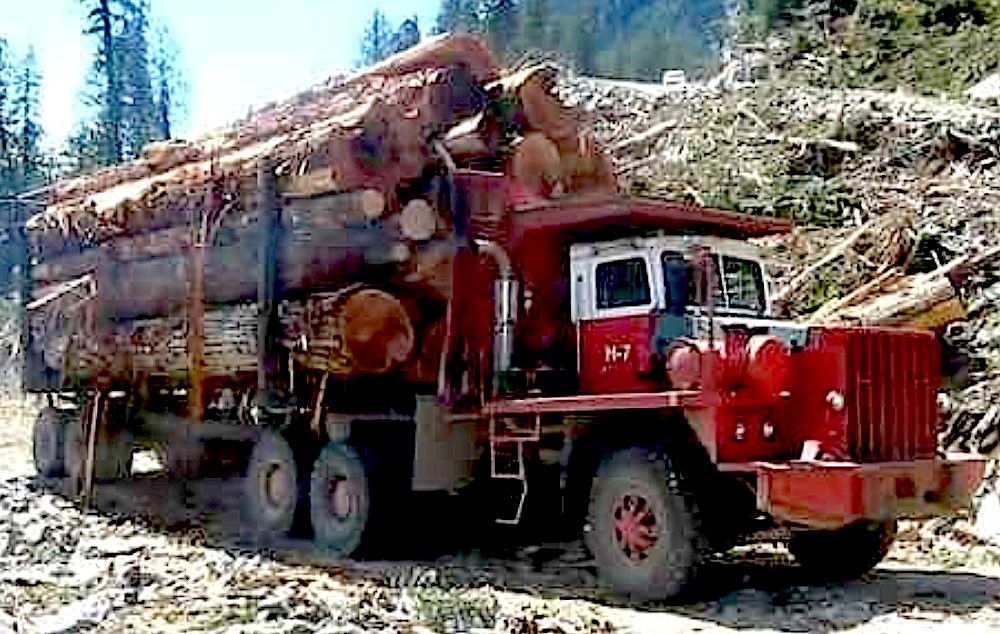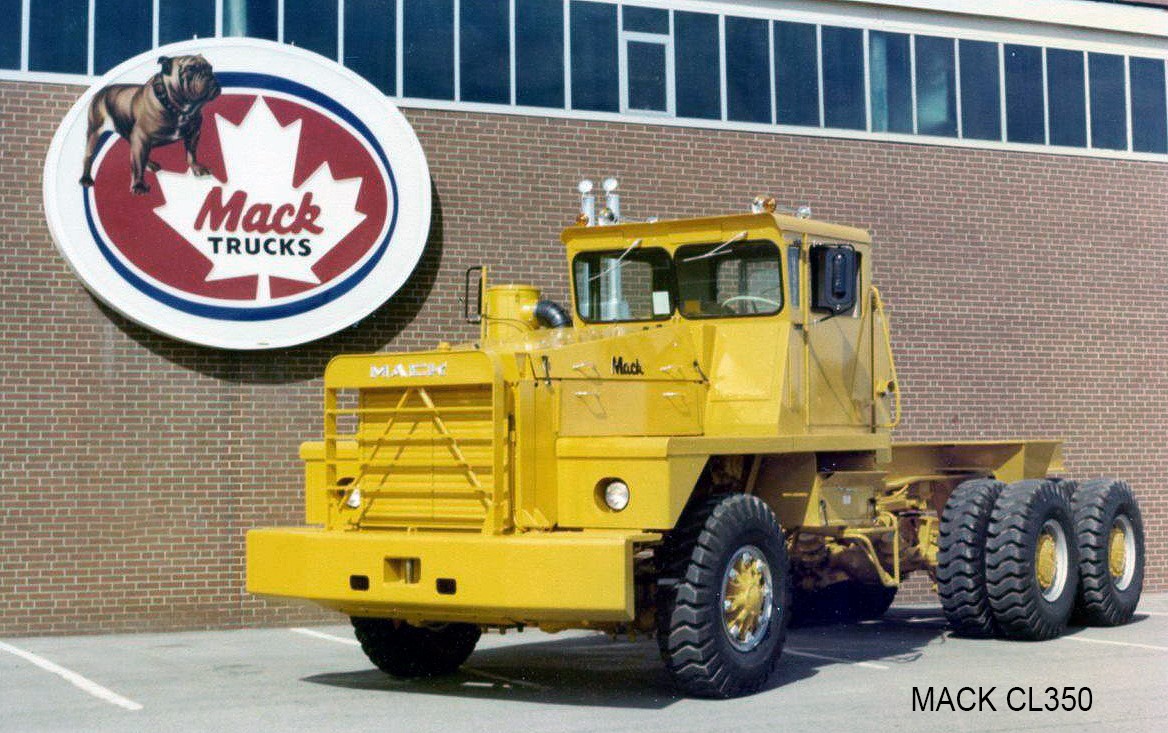The Mack CL350 wasn’t just another truck—it was built for one job: hauling big timber through Canada’s toughest terrain. Produced exclusively at Mack’s Oakville, Ontario, plant between 1976 and 1979, it was one of the rarest models the company ever built, with only 27 units produced, according to Mack’s records.
The first CL350 rolled out in early spring 1977, delivered to MacMillan Bloedel’s Menzies Bay Division, one of Canada’s largest forestry companies. MacMillan Bloedel ultimately took 13 of the 27 trucks, with most assigned to its Menzies Bay operation. Other units were sold to or acquired over time by logging operators in western Canada including Husby Forest Products, Campbell River, and Olympic Forest Products.
Designed for the brutal conditions of British Columbia’s mountains, Ontario’s dense forests, and Quebec’s backroads, the CL350 featured a heavy-duty steel frame, high ground clearance, and dual-drive rear axles, ensuring it could claw through deep mud and loose gravel without missing a beat.
Power came from a selection of serious heavy-duty engines, including the Detroit Diesel 12V-71, a 600-horsepower Cummins KT600, Mack’s own high-torque Maxidyne, and even a Rolls-Royce diesel—a rare but respected option. These were paired with Eaton-Fuller or Mack Maxitorque transmissions ranging from 10 to 15 speeds, giving drivers the gearing needed to tackle steep, fully loaded climbs. The air-actuated drum brakes were built to control massive log trailers, while Camelback or Hendrickson walking beam suspension kept the truck stable, even on roads that barely qualified as roads.
Mack also built a variation of the model, the CL350ST (Short Tonnage), which featured a shorter wheelbase and reinforced suspension for short-haul, high-weight logging applications. The standard CL350 had a longer wheelbase, making it better suited for long hauls and other vocational work.
Despite its rugged design, the CL350 suffered from serious durability issues in the beginning. The cab, though not unique to the CL350—it was shared with Mack’s M-series off-highway dump trucks—proved too weak for extreme logging conditions. Severe vibrations and rough terrain caused structural failures, with operators recalling cabs breaking apart and doors unexpectedly flying open while driving.
In response, Menzies Bay modified the design, replacing the original Mack doors with Pacific (IHC) doors and reinforcing the structure. To further improve durability, they separated the fenders and hood from the cab, mounting them directly to the frame to reduce stress. Some units received entire cab replacements, swapping the Mack cabs for those from Pacific or Challenger trucks—a testament to the extreme conditions these trucks faced.
Unlike later Mack CL models, which were designed for long-haul and vocational applications, the CL350 was built strictly for logging. By 1979, production ended as Mack shifted focus. Most were worked hard and eventually scrapped, making surviving examples incredibly rare. If you ever spot one, consider yourself lucky—you just saw one of trucking’s true unicorns.



